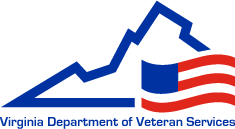The new Virginia Military Survivors and Dependents Education Program (VMSDEP) portal is live. Please call the VMSDEP Office at (804) 225-2083 or email at VMSDEP@dvs.virginia.gov if you have any issues accessing your account.
75th Anniversary of the G.I. Bill
G.I. Bill History
- Officially called the Servicemen’s Readjustment Act of 1944, the GI Bill was created by the U.S. Congress to help veterans of World War II.
- President Franklin D. Roosevelt championed the idea of the GI Bill because he was determined to do better for veterans returning from World War II than the government had done for veterans who returned from World War I.
- The former national commander of the American Legion, Harry Comery, proposed extending benefits to all male and female World War II veterans. His proposal became the first draft of the legislation sent to Congress.
- The Servicemen’s Readjustment Act was debate in Congress while the war still raged on the European and Pacific fronts. It was approved by both Houses and signed into law by President Roosevelt on June 22, 1944.
- Soon known as the GI Bill, it established hospitals, made low-interest mortgages available and most notably, granted stipends covering tuition and expenses for veterans attending college or trade schools.
- From 1944-1949, nearly 9 million veterans received nearly $4 billion from the bill’s unemployment compensation program. The GI Bill provided a $20 weekly unemployment benefit for up to one year to veterans seeking jobs.
- The GI Bill is best known for opening the door to higher education to many Americans who had never before had the opportunity. It enabled veterans to continue their education in college or vocational school to do so tuition-free up to $500 while also receiving a cost-of-living stipend. As a result, almost 49% of all college admissions in 1947 were veterans.
- No legislation played such an integral role in shaping Post-World War II America than the GI Bill. It allowed hundreds of thousands of men and women to pursue higher education, many of whom could not have afforded it otherwise.
- Since World War II, Congress has extended GI Bill benefits to all veterans of the armed forces including those who served in peacetime. In 1984, legislation was enacted to insure that Vietnam War veterans could receive higher education benefit. In 2008, the Post 9/11 Veterans Educational Assistance Act, often called the Post 9/11 GI Bill, gave veterans on active duty on September 11, 2001 greater benefits – including allowing the transfer of unused educational benefits to their spouses and children.
- In 2012, the U.S. Department of Veterans Affairs (VA) formally trademarked GI Bill to prevent the term from being misused by unauthorized educational institutions or other vendors.
- In 2017, President Donald Trump signed the Veterans Educational Assistance Act, called the Forever GI Bill into law. This law greatly expanded GI Bill benefits for eligible veterans and their dependents.
- In Virginia, the Department of Veterans Services the SAA (State Approving Agency) works with the VA and is responsible for reviewing and approving public and private colleges and universities, vocational schools and training programs in the Commonwealth to assure they meet federal and state regulations, qualifications, and standards for veterans to use their GI Bill benefits.
- Approximately 1,000 Virginia facilities are currently approved for GI Bill use. These include public and private colleges and universities, vocational schools, licensure and certification exams, on-the-job training and apprenticeship programs.
- In FFY2018, nearly 50,000 Virginia veterans and family members used GIBill® benefits. In fact, with $890 million in GI Bill payments, Virginia was the #4 state in receiving these payments (behind California, Texas and Florida).
- SAA conducts compliance audits of approved facilities to ensure the continue to meet program requirements. The agency can take formal action, including de-certification, for facilities that do not continue to meet requirements.
- SAA also provides outreach to transitioning service members by presenting informational briefings on military installations throughout the Commonwealth and assists veterans and family members with any issues they may have with an approved educational facility.
(Prepared by Communications Staff, Virginia Department of Veterans Services )


